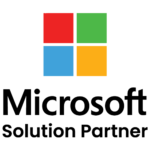Rewards
.





CANADA
55 Village Center Place, Suite 307 Bldg 4287,
Mississauga ON L4Z 1V9, Canada
Certified Members:
.



Home » Exploring Microsoft Fabric: Uncover the Possibilities for Success

Welcome to our comprehensive guide on Microsoft Fabric. This article will thoroughly explore the intricacies of Microsoft Fabric, including its features, advantages, and practical uses. As a trusted tech authority, we aim to offer valuable insights to help you grasp and leverage the potential of Microsoft Fabric service in your projects. Let’s begin!
Microsoft Fabric, also called Azure Service Fabric, is a platform developed by Microsoft. It simplifies the creation and administration of highly scalable and dependable applications. This platform provides solid groundwork for creating applications using a microservices architecture. It supports deployment in various environments, including on-premises, in the cloud, or hybrid setups. Azure Service Fabric is designed to handle complex scenarios, such as applications requiring high availability, low latency, and fault tolerance. By abstracting the complexities of managing infrastructure, scalability, and reliability, developers can focus primarily on writing application logic.
Get free Consultation and let us know your project idea to turn into an amazing digital product.
Microsoft Fabric UI, often called Fluent UI, is a comprehensive design system developed by Microsoft. It is a foundation for creating cohesive and consistent user interfaces across various platforms and devices.
Microsoft Fabric aims to provide designers and developers with a versatile range of tools that streamline the process of creating visually attractive, functional, and inclusive user interfaces.
Microsoft Fabric is an advanced framework developed by Microsoft to make it easier to build distributed systems that are highly scalable and reliable. It includes various tools, services, and libraries that enable developers to create robust applications that can handle failures and efficiently handle large workloads.
Azure Service Fabric offers a significant benefit by effortlessly managing the lifecycle of applications. It effectively monitors the well-being of application instances, automatically implements updates, and scales operations according to resource requirements. This automation reduces the burden on developers and operations teams, enabling them to focus on delivering value to end-users. Azure Service Fabric supports various programming languages, frameworks, and tools, providing flexibility to developers. In addition, it offers reliable stateful services, allowing applications to store and access data with built-in replication and failover mechanisms. It also supports stateless services, which are helpful for lightweight and scalable components.
Microsoft Fabric offers the following components:
Microsoft Fabric utilizes the powerful features of Spark to enable efficient authoring and seamless execution of complex data transformations on a large scale.it is crucial in making data accessible to everyone through the lake house model. Additionally, its integration with Data Factory allows for the scheduling and orchestrating of notebooks and Spark jobs.
A robust tool from Microsoft known as Azure Data Factory seamlessly integrates the user-friendly features of Power Query with the scalability offered by Azure Data Factory. In addition, it offers over 200 native connectors for linking data from on-premises and cloud-based sources.
The data science capability in Microsoft Fabric assists in building,
deploying, and operationalizing machine learning models within the Fabric framework. It interacts with Azure Machine Learning for built-in experiment tracking and model registry, empowering data scientists to enrich organizational data with predictions that can be incorporated into business intelligence reports. This transition enables the shift from descriptive to predictive insights.
Microsoft Fabric’s data warehousing component provides top-tier SQL performance and scalability. It features separate computing and storage for independent scaling and utilizes the Delta Lake format for native data storage.
Observational data from various sources such as apps, IoT devices, and human interactions represent the fastest-growing data category.
This semi-structured, high-volume data often exists in JSON or Text format with varying schemas, posing challenges for traditional data warehousing platforms. However, Microsoft Surface Fabric’s Real-Time Analytics offers an excellent solution for analyzing such data.
Recognized as a leading business intelligence platform worldwide, Power BI in Microsoft Fabric allows business owners to swiftly and intuitively access all Fabric data for data-driven decision-making.
With Microsoft Fabric, organizations can overcome the challenges of data silos and bottlenecks. By centralizing data from various systems, applications, and sources, Fabric creates a unified view, empowering businesses with a comprehensive understanding of their operations. This consolidation streamlines workflows, reduces redundancy, and enhances data accessibility, improving operational efficiency.
Microsoft Fabric leverages advanced analytics techniques to extract meaningful patterns, trends, and correlations from vast amounts of data. Its powerful algorithms and machine learning capabilities enable businesses to gain deep insights and identify valuable opportunities. As a result, Microsoft Fabric empowers organizations to make data-driven decisions that drive growth and innovation by providing actionable intelligence.
With an unwavering commitment to excellence, Microsoft Fabric delivers exceptional performance and scalability that sets it apart. Built upon cutting-edge technologies and years of meticulous research, Microsoft Fabric provides an infrastructure that enables businesses to effortlessly scale their operations, ensuring smooth functionality even in the most demanding environments. Whether your organization requires the handling of massive data volumes or the seamless integration of complex systems, Microsoft Fabric has covered you.
In the present globalized society, success hinges on the principles of collaboration and integration. Recognizing this, Microsoft Fabric offers a seamless integration framework that enables businesses to consolidate their systems, processes, and data sources into a unified ecosystem. Microsoft Fabric empowers organizations to break down silos through its intuitive interface and robust API, fostering collaboration and enabling teams to work harmoniously toward common goals. Say goodbye to productivity bottlenecks and welcome a new era of streamlined operations.
The security of sensitive data and the reliability of systems are paramount concerns for any business. Understanding this critical aspect, Microsoft Fabric incorporates state-of-the-art security measures, safeguarding your valuable information against potential threats. Microsoft Fabric ensures that your data remains protected through advanced encryption algorithms, multi-factor authentication, and comprehensive access controls. Moreover, with its fault-tolerant architecture and built-in redundancy, Microsoft Fabric guarantees uninterrupted service delivery, minimizing downtime and maximizing productivity.
Artificial Intelligence (AI) has transformed multiple sectors, revolutionized processes, and unleashed fresh opportunities. Microsoft Fabric embraces this transformative technology, providing businesses with powerful AI capabilities that enable them to extract valuable insights, automate repetitive tasks, and make data-driven decisions. By leveraging AI within Microsoft Fabric, organizations can enhance their operational efficiency, drive customer engagement, and gain a competitive edge in the ever-evolving digital landscape.
Developers lie at the heart of innovation, and Microsoft Fabric recognizes their indispensable role in driving technological advancements. Microsoft Fabric offers developers a wide range of tools, frameworks, and APIs, allowing them to construct resilient and expandable applications that excel in flexibility and adaptability. By leveraging the capabilities of Microsoft Fabric developers can transform their concepts into tangible solutions tailored to meet the specific requirements of businesses operating in various sectors.
A notable feature of Azure Service Fabric is its support for containerization. Developers can package their applications and dependencies into containers, which Azure Service Fabric can then deploy and manage. As a result, it makes developing, testing, and deploying applications consistently across different environments easier.
Azure Service Fabric has gained significant attention and adoption in the industry due to its capabilities and benefits. Many organizations prefer to utilize it because it can construct and operate expansive applications, including Microsoft’s Azure SQL Database, Azure Cosmos DB, and Azure Kubernetes Service. In addition, its effectiveness in managing crucial tasks and facilitating smooth scalability has favored it highly.
Microsoft Fabric excels in scaling applications seamlessly. Its distributed architecture can dynamically adjust resources based on workload demands, allowing your applications to handle increased traffic and scale effortlessly. Whether you’re dealing with a sudden surge in users or planning for long-term growth, Microsoft Fabric has covered you.
In today’s fast-paced digital landscape, downtime can harm any business. Microsoft Fabric addresses this challenge by providing built-in fault tolerance and self-healing capabilities. It automatically detects failures, isolates affected components, and redistributes the workload, ensuring that your applications remain available and reliable despite unexpected failures.
Microsoft Fabric introduces the concept of actors, simplifying the development of highly concurrent and scalable applications. Actors encapsulate state and behavior, enabling Web developers to build systems that efficiently handle millions of simultaneous users. This powerful programming model promotes scalability and simplifies the design and implementation of distributed applications.
Service Fabric is a programming model that allows developers to build stateful Fabric services that can preserve data consistency and durability even in the presence of failures. By leveraging reliable collections and transactional operations, developers can ensure the integrity of their data while benefiting from the scalability and resilience offered by Microsoft Fabric.
Microsoft Fabric seamlessly integrates with the broader Microsoft ecosystem, leveraging synergies with existing tools and technologies. In addition, it can integrate with popular platforms such as Azure Data Lake Storage, Azure Databricks, and Power BI, further extending its capabilities. This integration facilitates a cohesive analytics environment where businesses can leverage their existing investments while harnessing the power of Fabric.
To better illustrate the integration and implementation process, here is a diagram showcasing the relationship between Microsoft Fabric and other key components:
graph LR
A [Microsoft Fabric]
B [Azure Data Lake Storage]
C [Azure Databricks]
D [Power BI]
A — Integrates with –> B
A — Integrates with –> C
A — Integrates with –> D
Microsoft Fabric provides rich tools, frameworks, and APIs that streamline development.
Thanks to its extensive ecosystem, software developers can concentrate on creating the essential features of their applications without being burdened by complex infrastructure challenges. Furthermore, by harnessing Microsoft Fabric’s capabilities, web application developers can accelerate their development processes and swiftly deliver top-notch applications.
Microsoft Fabric enables applications to achieve optimal performance and efficiency with its distributed nature and intelligent resource allocation. It efficiently utilizes available resources, allowing you to make the most of your infrastructure investment. You can create applications that deliver exceptional responsiveness and scalability by leveraging Microsoft Fabric’s performance-oriented features.
Microsoft Fabric integrates seamlessly with Microsoft Azure, enabling you to harness the wide range of services and tools the Azure platform offers. By merging the capabilities of Microsoft Fabric Azure, you can effortlessly create, launch, and oversee your applications on a large scale, benefiting from Azure’s extensive global reach and strong ecosystem.
In the current era of digital advancements, businesses encounter a growing need for smooth connectivity and fast data processing. Unfortunately, conventional centralized systems often find it challenging to cope with the magnitude and intricacy of contemporary applications. Microsoft has introduced a groundbreaking solution to address these challenges: Microsoft Fabric.
Microsoft Fabric is a platform for distributed systems that harnesses the capabilities of cloud technology to facilitate smooth communication and coordination between different components and services. With its robust features and capabilities, Microsoft Fabric has found its way into numerous real-world applications, revolutionizing industries and driving innovation.
In the e-commerce industry, where handling high traffic volumes and ensuring system availability is critical, Microsoft Fabric offers an ideal solution.
It allows e-commerce platforms to expand operations during busy shopping, manage high transaction volumes effectively, and provide customers with a seamless shopping experience.
As the Internet of Things expands, ensuring dependable and adaptable solutions becomes increasingly crucial. Microsoft Fabric provides a robust framework for developing IoT applications. It helps to handle the massive influx of data from connected devices, ensuring real-time processing and analysis for actionable insights.
In the financial services sector, where reliability and performance are paramount, Microsoft’s importance of Microsoft Fabric is invaluable. It allows financial institutions to build highly available and resilient applications. The process includes making transactions efficiently, providing real-time analytics, and maintaining data integrity despite failures.
The gaming industry thrives on immersive and multiplayer experiences. Microsoft Fabric powers cloud-based gaming services, enabling seamless real-time interactions, multiplayer matchmaking, and scalable infrastructure for game developers. Moreover, Microsoft Fabric’s capabilities extend beyond gaming to media streaming services, allowing users to enjoy high-quality video content on demand.
Real-time data processing and secure communication are vital in healthcare. Microsoft Fabric’s distributed systems architecture helps healthcare providers. It helps to manage electronic health records (EHRs), enable telemedicine services, and facilitate secure information exchange across healthcare organizations. Additionally, it aids in genomics research, accelerating the analysis of massive genomic datasets to advance precision medicine.
Effective supply chain management is vital for businesses in today’s interconnected global economy. Microsoft Fabric’s distributed ledger capabilities enable end-to-end visibility and traceability in supply chain processes. As a result, it enhances transparency, reduces fraud, optimizes inventory management, and streamlines logistics operations, ultimately improving customer satisfaction and cost savings.
These are just a few examples of how Microsoft Fabric is applied in real-world scenarios. Microsoft Fabric finds practical applications in various real-world situations. By leveraging its distributed systems architecture and cloud computing capabilities, organizations can develop strong, scalable, and highly accessible applications that help to handle the requirements of today’s digital landscape effectively. As technology advances, Microsoft Fabric will continue to be a pivotal force in shaping the future of distributed systems. It’s a remarkable capacity for fault tolerance, scalability, and real-time data processing. It helps opens limitless possibilities across industries, driving innovation and revolutionizing businesses.
Microsoft Fabric is implemented in real-life scenarios to significant effect. Organizations are empowered through their distributed systems architecture and the power of cloud computing. It helps to construct robust, scalable, and highly available applications that effectively address the demands of the modern digital landscape. As technology progresses, Microsoft Fabric will undeniably play a critical role in shaping the future of distributed systems. Its ability to provide fault tolerance, scalability, and real-time data processing. It paves the way for boundless industry opportunities, fostering innovation and driving business transformation.
To summarize, Microsoft Fabric is an influential framework. It enables Azure developers to create applications with exceptional scalability, reliability, and performance capabilities. In addition, its rich feature set and seamless integration with Microsoft Azure. make it a preferred choice for businesses developing and deploying distributed systems. By leveraging Microsoft Fabric’s capabilities, you can unlock new possibilities for your applications and stay ahead in today’s competitive landscape.
Remember, to fully explore and leverage the potential of Microsoft Fabric, consult the official documentation and engage with experienced Web developers who can provide guidance tailored to your specific needs. Then, embrace the power of Microsoft Fabric and unlock a world of possibilities for your applications.

Schedule a Customized Consultation. Shape Your Azure Roadmap with Expert Guidance and Strategies Tailored to Your Business Needs.
.





55 Village Center Place, Suite 307 Bldg 4287,
Mississauga ON L4Z 1V9, Canada
.




Founder and CEO

Chief Sales Officer

🎉 Thank you for your feedback! We appreciate it. 🙌